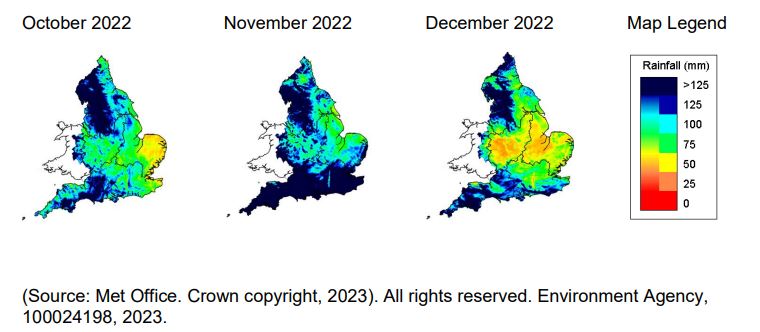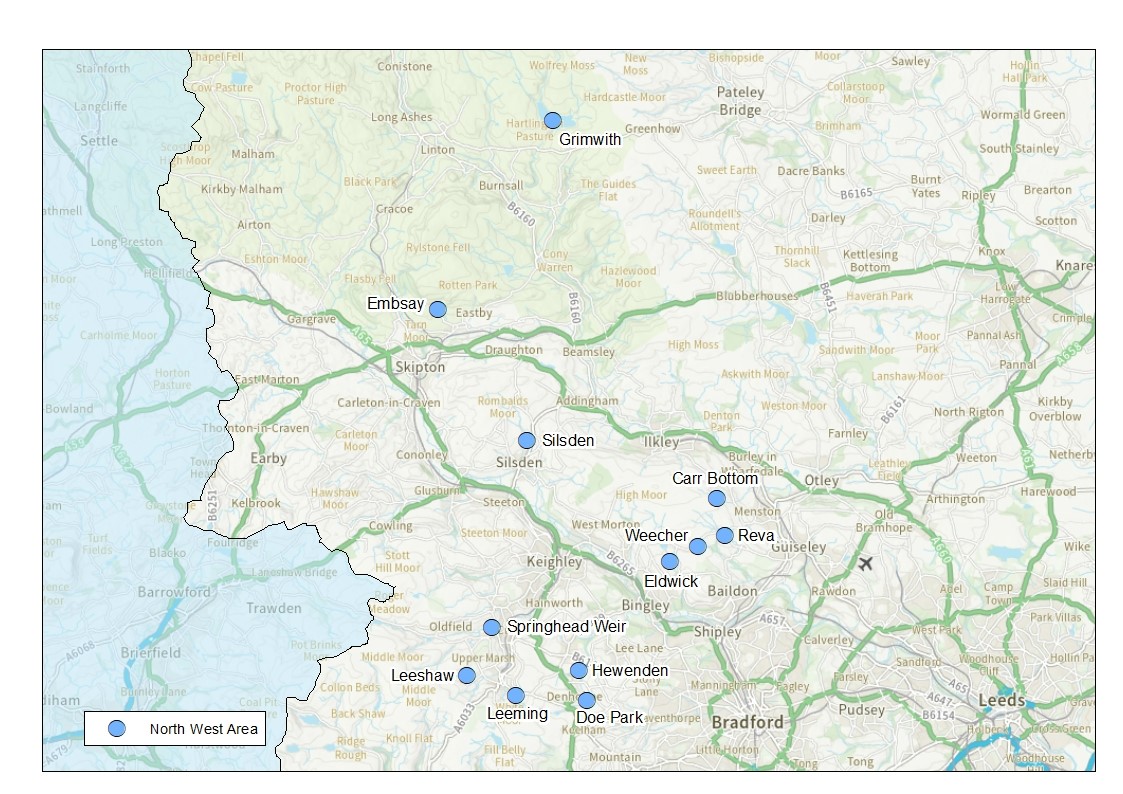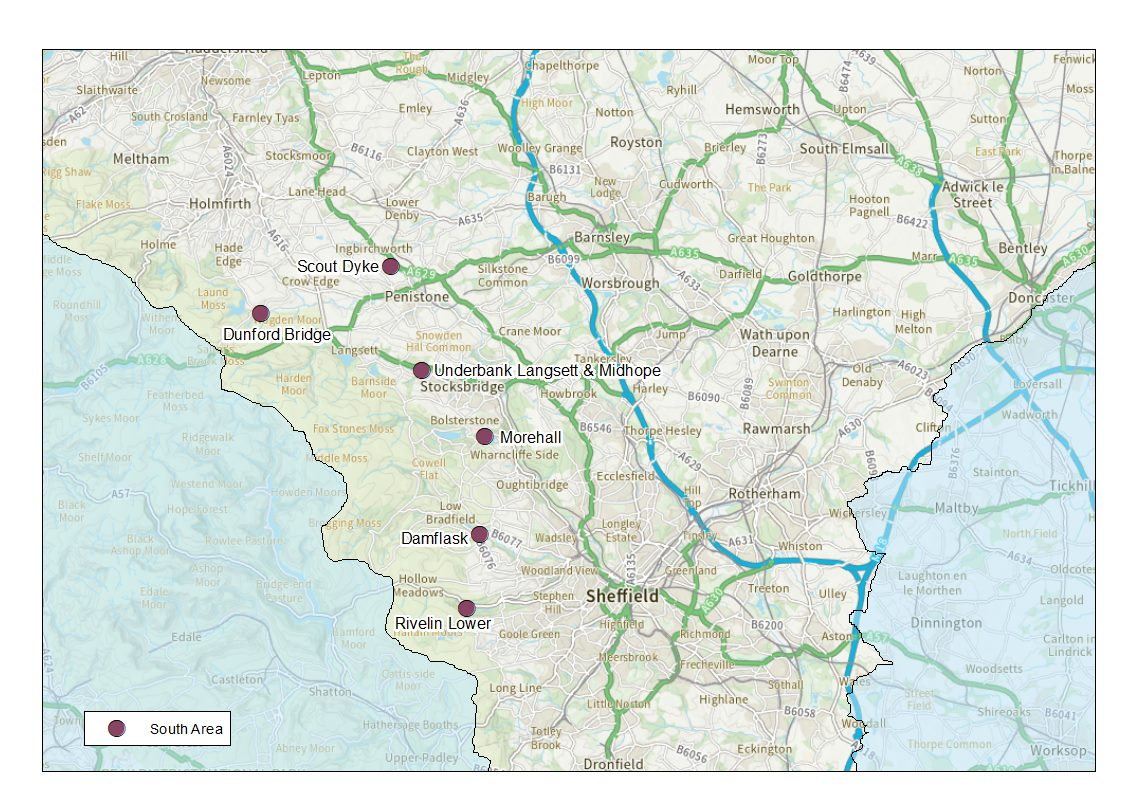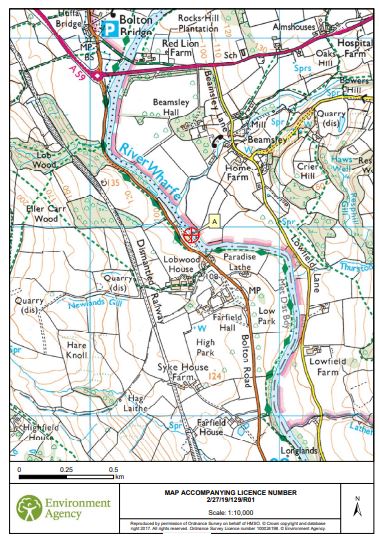Prolonged Dry Weather in Yorkshire - Information Page
Overview
Water is a precious resource that we can’t live without; from supplying drinking water and supporting fisheries, to providing an essential resource to business and agriculture, and a source of recreation.
It is important that our rivers, lakes, estuaries, coastal areas, wetlands and groundwater are managed properly to ensure the needs of society, the economy and wildlife can be met and maintained over the long-term.
| Latest Update 26 January 2023 |
|---|
|
On Monday 16 January 2023, Yorkshire Area officially moved out of drought status. Yorkshire Water’s reservoir stocks are recovering and were at 88% full. Groundwater levels also reacted to the increased rainfall over recent months. Due to the improving situation across Yorkshire we have moved into ‘Recovering from Drought’ status. The Environment Agency will continue to monitor water levels and assess any impacts on the environment as well as the need to service the needs of agriculture and business. We will take action again if needed. |
Environment Agency Role
We have a crucial role as a regulator, in responding to periods of prolonged dry weather & drought. We will monitor conditions, protect sensitive habitats, and work with Yorkshire Water (YW) and other abstractors to safeguard supplies.
We work with water abstractors to balance the needs of the public, industry and farmers, and the environment, to ensure long-term water resilience.
We will ensure water users and the environment get the water they need and:
- Ensure we are responding quickly to emergencies;
- Work with Yorkshire Water to help them follow their drought plans so that they implement all agreed actions in a timely way;
- Work proactively with farmers and other water users, who abstract water under licence from the Environment Agency, to help them to get the water they need whilst sustaining environmental needs;
- Continue to actively monitor the weather, water situation and the environment;
- Manage down demand and protect the environment, using our regulatory powers as necessary;
- Communicate with those who use the environment to help identify potential impacts as quickly as possible.
What is 'Prolonged Dry Weather'
This is a naturally occurring event when rainfall levels are lower than normal for a sustained period of time resulting in low river, reservoir and groundwater levels.
Our most recent experiences in Yorkshire were 1976, 1995, 2012 and in 2018 when we experienced one of the hottest summers on record.
What is happening across Yorkshire Area
As of Monday 16 January 2023, Yorkshire Area officially moved out of drought status.
Yorkshire Water’s reservoir stocks are recovering and were at 88% full. Groundwater levels have also reacted to the increased rainfall over recent months.

 Monthly rainfall across England and Wales; Oct-Dec 2022.
Monthly rainfall across England and Wales; Oct-Dec 2022.
The Environment Agency will continue to monitor water levels and assess any impacts on the environment as well as the need to service the needs of agriculture and business.
If you would like to see more details about water resources in Yorkshire you can find more information including our published monthly reports on Gov.uk. Yorkshire Water also publish water situation data which can viewed and downloaded.
What can you do to help?
The average person in England uses 140 litres per day. The water we all use every day comes from our environment and we urge everyone, from industry to people at home, to use it wisely and to follow advice from their water company on saving water.
Yorkshire Water’s top tips for saving water, energy and money include the following:
- Only wash full loads in your washing machine or dishwasher.
- Use a bucket and sponge to wash your car, rather than a hose-pipe.
- Have a four-minute shower, instead of a bath.
- Turn the tap off when brushing your teeth.
- Install a water butt to collect rainwater for watering your garden.
- Water your garden early in the morning or in the evening when it is cooler.
You can read more on their website at Yorkshire Water. More information on saving water can also be found on WaterWise websites.
We would also urge anyone seeing any environmental impacts due to dry weather, such as fish in distress, to report it to our free 24 hours Environment Agency incident line on 0800 80 70 60.
What is the Environment Agency doing?
Whilst we have moved out of drought status, the issue will remain a priority for Yorkshire, and we will continue to carefully monitor rainfall and water levels.
As we move into recovery phase, we will focus on the lessons learned and how we can improve and prepare for future drought incidents.
We are aware that with our changing climate, prolonged dry weather and drought is likely to become a more frequent issue affecting our society, and the environment. We are confident that we have the skills and expertise to minimise the environmental impact of drought, whilst working to protect water for people.
What is Yorkshire Water doing?
The Government requires all water companies to produce a Drought Plan, setting out their plans on how they will maintain water supplies to customers in the event of a drought. These plans are reviewed every five years, in conjunction with the Environment Agency.
Yorkshire Water’s Drought Plan can be viewed on their website.
There are a number of actions that Yorkshire Water can take to preserve water supplies, however during more severe conditions, they may need to apply for drought orders or drought permits to alter abstraction licence conditions. At these times there would be close consultation with the Environment Agency and relevant stakeholders.
You can view details on any Drought Permit applications on Yorkshire Water’s web-page: Yorkshire Water - Drought Permits.
The following Drought Permits issued to manage the drought situation will remain in place until they expire.
More Information
On 24 October 2022 the Environment Agency issued Yorkshire Water with 12 Drought Permits for their North West reservoirs group.
During the public consultation on Yorkshire Water's applications for 12 Drought Permits on their North West Reservoir Group, an objection was received from a member of the public and a public hearing took place on 12 October at Environment Agency Offices. After considering the Planning Inspector’s report on the hearing the Environment Agency issued the permits.
The permits will remain in place until 31 March 2023 and will allow Yorkshire Water to reduce the amount of water released so that they can conserve water in the reservoirs for longer and secure public water supplies.
The map below shows the 12 sites the permits relate to:
More Information

More Information

The following Drought Orders issued to manage the drought situation will remain in place until they expire.
More Information
More Information
The drought order was intended impose conditions on Yorkshire Water to reduce the amount of water flowing from the reservoir into Elslack Beck, to help maintain water levels downstream of the reservoir for longer & to protect biodiversity and habitats.
Following rainfall in October, levels in Elslack Reservoir have risen sufficiently to allow the withdrawal of this application
More Information
In October 2022 Defra approved Yorkshire Water’s application for a drought order on the River Ouse at Moor Monkton for up to six months.
This will mean that Yorkshire Water can continue to supply customers using river water, helping reservoir stocks to recharge, which will help maintain supply to customers in the Yorkshire area.
You can view details on Yorkshire Water’s web-page: Yorkshire Water - Drought Permits.
This will mean that Yorkshire Water can continue to supply customers using river water, helping reservoir stocks to recharge, which will help maintain supply to customers in the Yorkshire area.
What are Drought Permits?
Water companies must apply to the Environment Agency (or Natural Resources Wales) for a drought permit. Drought Permits allow temporary changes to some of the conditions under which water companies operate, allowing them to:
- Reduce the amount of water released from reservoirs to support river levels downstream.
- Take more water from rivers to use for supply, giving reservoir levels more chance to recover.
Both these actions allow water companies to increase the chances of reservoirs refilling over winter when the weather is wetter, and giving a healthier start to next spring and summer in terms of water stocks.
When we assess the permit applications, we must be satisfied that a serious deficiency of supplies of water in an area exists, or it is threatened, and that the reason for the deficiency is from an exceptional shortage of rain.
We only issue a permit if we are content there are procedures in place to monitor and mitigate for any impact on the environment. We also needed evidence of Yorkshire Water’s ongoing commitment to promote water efficiency, reduce abstraction and drive down its leakage.
What are Drought Orders?
Drought orders are issued by the Secretary of State for the Environment, Food and Rural Affairs (or by Welsh ministers in Wales). Drought Orders apply when there is serious threat to plants or animals that are dependent on that water, therefore they can be more complex compared to drought permits.
Audiences
- Recreational and commercial river users
- Fishing clubs and representative associations
- Members of the public with an interest in the river, the species and conservation
- Businesses
- Statutory organisations
- Elected representatives, including MPs
- Local councils
- All water abstractors
Interests
- Water resources
- Drought

Share
Share on Twitter Share on Facebook